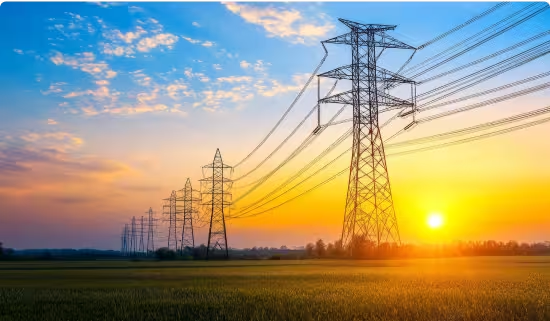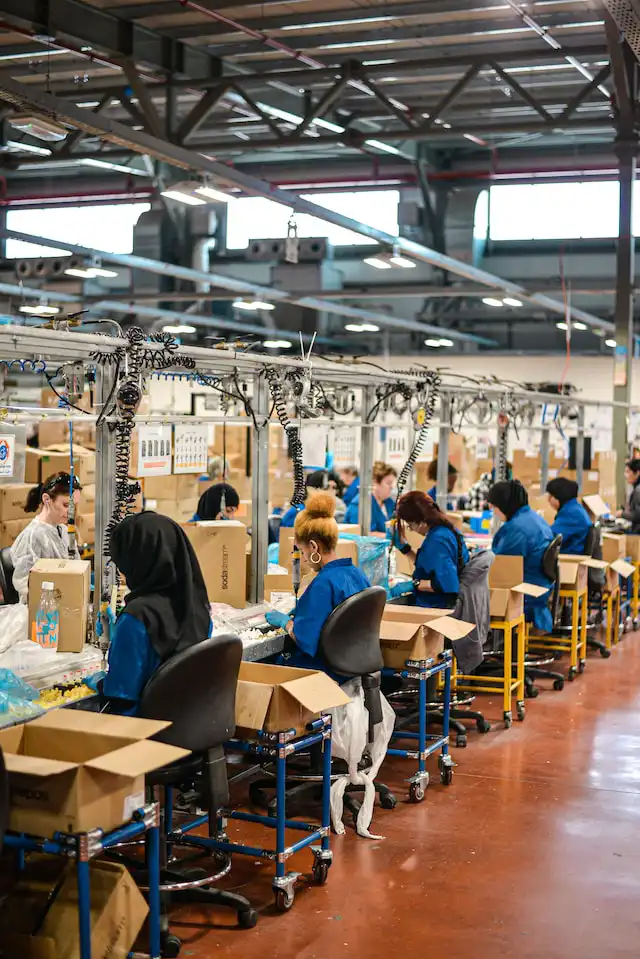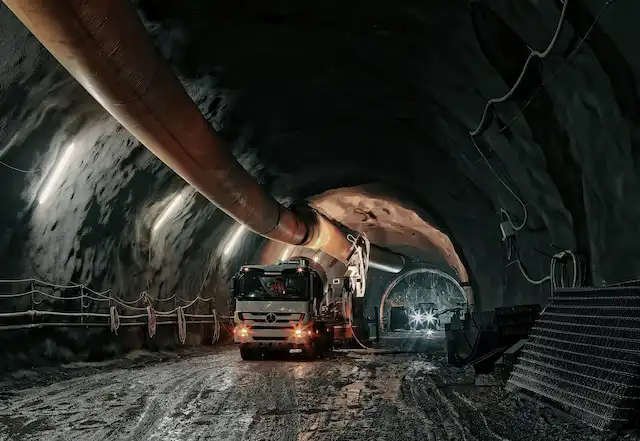
Global Refractories Market Size, Segments, Outlook, and Revenue Forecast 2022-2028 by Product Type (Non-Clay Refractories, and Clay Refractories), Form (Bricks & Shaped, and Monolithic & Unshaped), Alkalinity (Acidic, Basic, and Neutral), End User (Iron & Steel, Energy & Chemicals, Non-Ferrous Metals, Cement, Ceramic and Glass), Region (North America, Europe, Asia Pacific, and Latin America, Middle East and Africa (LAMEA))
Region:Global
Product Code:KRBR38
Invalid Date
150
About the Report
Market Overview
Refractory materials are nonmetallic minerals possessing chemical and physical properties. It is resistant to decomposition by heat, pressure, or chemical attacks and retains its strength and form. The refractory material is produced from oxides of silicon, aluminum, calcium, and magnesium. Due to its great mechanical strength even working at high temperatures, the refractories are used in metallurgical processes. They are used as a primary material for internal linings in large industrial equipment because of their safe, and cost-effective operations. Fireclay refractories, high alumina refractories, silica brick, magnesite refractories, and monolithic refractories are some of the examples of common refractory materials.
According to Ken Research Analysis, the global refractories market was valued at ~US$ 15 billion in 2017. Furthermore, owing to the growing demand for refractories in the iron and steel industry, it is estimated to be ~US$ 25 billion by 2022 and is expected to reach a market size of ~US$ 35 billion by 2028 growing with a CAGR of 5%. 
The refractories market is majorly driven by factors such as global urbanization, industrialization, increasing demand for automotive industries, and a rise in demand for iron and steel in the construction industry.
- The growth of the construction industry was in full swing before the COVID-19 pandemic hit its development. Despite a slowdown faced for a period of nearly six to eight months, the industry has revived quite positively. It is expected that India’s construction industry to grow at ~6% CAGR from 2019-2028. Apart from India, China, the Philippines, and several other Middle Eastern countries are expected to showcase more than an 8% growth rate. For the Philippines, the construction industry accounts for nearly 17% of the country’s GDP. The use of automation, and advanced construction techniques have been contributing to its growth along with a high demand for iron and steel.
- According to the Global Construction Perspective and Oxford Economics, the global construction market will grow by ~85% to US$ 15.55 trillion worldwide by 2030, with three countries China, India, and the US accounting for 57% of the global growth, thus propelling the growth of refractories. The below chart depicts the comparison of the global construction market in 2020 and 2030.

Growing environmental concerns, handling and storage challenge, and raw material price fluctuation are some of the factors restraining the growth of the Refractories Market.
- The restriction on the use of refractories due to the growing environmental concern is restraining the refractory market to grow. Manufacturing of refractories is carbon intensive process including steps like mining, baking, and curing refractory material. These lead to the emission of organic particulate matter, and harmful gases like sulfur dioxide, nitrogen oxides, carbon monoxides, fluorides, and various other organic compounds.
- In Europe, projects such as ReStaR (Review and Improvement of Testing Standards for Refractory Products), have been implemented to ensure the reliability and precision of the refractory testing standards in the region. Such environmental regulations and restrictions on the use of refractory materials act as restraining factors for the growth of the refractory market.
The pandemic heavily affected the refractories’ global manufacturing and supply chain.
- The refractory products are important for all high-temperature processes in the making of metals, cement, glass, and ceramics. The lockdown in various countries led to supply chain disruption, hindering the market’s growth rate. The initial spread of the virus led to the shutdown of iron, steel, cement, and glass manufacturing plants. The reduction of these materials led to the shortage of refractories production, as the construction in various countries stopped. The manufacturing and construction industry also witnessed a shortage of employees, thus slowing down the production of cement and glass companies resulting in the decline of refractories products.
- According to a report published by the National Bureau of Statistics China 2020, large-scale manufacturing witnessed a 20% decline in production in March 2020, while profit declined by 66% as compared to March 2019.
Scope of the Report
Global Refractories Market is segmented by product type, form, alkalinity, and end user. The product type is further classified into non-clay refractories, and clay refractories. In addition, the report also covers market size and forecasts for each of the four regions’ refractories market. The revenue used to size and forecast the market for each segment is US$ billion.
|
By Product Type |
|
|
By Form |
|
|
By Alkalinity |
|
|
By End User |
|
|
By Geography |
|
Key Trends by Market Segment
By Product Type: Clay Refractories segment held the largest market share in 2021 of the Global Refractories Market, owing to its low cost compared to the non-clay segment.
- Fireclays bricks and insulation products are generally made up of clay material and are used by iron and steel products manufacturers. Furthermore, raw materials required for manufacturing refractory clay are easily available, which is an added advantage for the growth of the clay refractory segment.
- Many clay products and refractory manufacturing companies are using robotics and automation to improve plant efficiency and productivity. For, instance according to Boston Consulting Group (BCG), 1.2 million industrial robots are expected to be deployed by 2025, thus indicating a rise in automation and robotics technology hence increasing the productivity of clay products.

By Form: The Bricks and Shaped segment held the largest market share in 2021 of the Global Refractories Market.
- Bricks are used to form an insulation layer inside ovens and kilns and are replaced periodically to meet the insulation ratings set by the customer. It is required in the metal and non-metal industries. This is one of the major factors for the brick and shaped segment to dominate the global refractories market by form.
- Furthermore, iron and steel manufacturing, cement manufacturing, and glass production prefer shaped refractories for thermal insulation purposes in incinerators, furnaces, and reactors. Steel is utilized more in vehicle production as compared to glass, hence an increase in brick and shaped segments.
- According to a joint report by the International Organisation of Motor Vehicles and World Steel Association 2021, steel-based products account for 60% of the vehicle’s body structure. In comparison, glass accounts for more than 6% of the vehicle’s body weight, hence indicating an increase in demand for brick and shaped segments.

By Alkalinity: The basic segment held the largest market share in 2021 of the Global Refractories Market.
- The basic refractory material contains magnesia, dolomite, and limestone and is stable to alkaline material but reacts to acid.
- The most commonly used basic refractory brick is magnesite brick. As it is resistant to alkaline slag and iron slag, therefore, is applied to the converter lining and furnace bottom.
- According to the US Geological Survey, China is the largest producer of magnesite and produced around 19,000 metric tons in 2019. The rising demand for magnesite in the construction industry due to its excellent adhesive, fire resistance, and high bonding strength is escalating the demand for basic refractories in recent times.
By End User Segment: The Iron and Steel segment held the largest market share in 2021 of the Global Refractories market.
- It is a major end-user of refractories, which accounts for almost 60% of the refractory market. Refractories can withstand high temperatures, without affecting their physical properties. The increasing demand for infrastructure development in emerging economies is likely to drive the market for iron and steel.
- The global steel production reached 1950 metric tonnes in 2021 as compared to 1879 million tons in 2020, according to the World Steel Association. This is indicating the growing demand for the iron and steel segment.
By Geography: Asia Pacificis expected to account for the largest share among all regions within the Global Refractories Market, during the forecasted period 2022-2028.
- The rapid increase in consumption of refractories in power generation, cement and glass industry, and iron and steel manufacturing is expected to increase demand for Refractories in Asia Pacific Region.
- China has the largest economy in the Asia-Pacific region in terms of GDP, and the building and construction industry witnessed rapid growth in 2021. It is the world’s largest construction market accounting for 20% of all investments. The Shanghai Plan, according to the National Development and Reform Commission (NDRC) in May 2020 is planning to invest approx. US$ 38 billion for the next three years, resulting in a positive outlook for refractories.

Competitive Landscape
According to Ken Research Study, it is estimated that the global refractories market is highly fragmented amongst the global, regional, and country niche players. It is estimated that the market comprises nearly ~500 players across four major regions. Although the global players hold a 10% share in terms of the number of competitors, these players dominate the revenue share by holding ~40% of market revenue. Some of the major players in the market include RHI Magnesita, Vesuvius PLC, Shinagawa Refractories Co., Ltd., Krosaki Harima Corporation, Saint Gobain SA, IMERYS, Chosun Refractories, Puyang Refractories Group Co., Ltd., IFGL Refractories Ltd., Refratechnik, Resco Products, Morgan Advanced Materials and among others.
Recent Developments Related to Major Players
- In June 2021, IMERYS, a French multinational company with a specialization in the production and processing of industrial minerals started production at its new Vishakhapatnam refractory plant. The IMERYS Group invested INR 350 crores in creating the facility to cater to domestic customers. The new plant supplies the refractory as well as the construction market with calcium aluminate binders.
- In March 2021, the Refratechnik Group, operator of refractory and mineral business, and Höganäs Borgestad Group, a refractory company in the Nordic region entered a strategic agreement for the supply of refractory products.
- In June 2020, Vesuvius, a global leader in molten metal flow engineering and technology serving the steel and foundry industries under its brand Foseco, launched its new product—KALPUR. It is a Direct Pouring Application on an Automatic High-Pressure Green Sand Moulding Line.
- In June 2020, Morgan Advanced Materials, a global manufacturer of specialist products, using carbon, advanced ceramics, and composites acquired Carbo San Luis, a manufacturer of refractory material. This is likely to help Morgan Advanced Materials in expanding its network in Peru, Chile, and Argentina.
Conclusion
The Global Refractories Market is primarily driven by the growing demand for refractories in the iron and steel industry. The market size is estimated to be US$ 25 billion by 2022 and is expected to reach a market size of US$ 35 billion by 2028 growing with a CAGR of 5%. The refractory market is growing due to the rise in industrialization and urbanization. Asia Pacific is the dominating region, owing to the rapid increase in consumption of refractories.
Note:This is an upcoming/planned report, so the figures quoted here for a market size estimate, forecast, growth, segment share, and competitive landscape are based on initial findings and might vary slightly in the actual report. Also, any required customizations can be covered to the best feasible extent for Pre-booking clients and report delivered within a maximum of two working weeks.
Key Topics Covered in the Report
- Snapshot of Global Refractories Market
- Industry Value Chain and Ecosystem Analysis
- Market size and Segmentation of Global Refractories Market
- Historic Growth of Overall Global Refractories Market and Segments
- Competition Scenario of the Market and Key Developments of Competitors
- Porter’s 5 Forces Analysis of the Global Refractories Industry
- Overview, Product Offerings, and SWOT Analysis of Key Competitors
- Covid 19 Impact on the Overall Global Refractories Market
- Future Market Forecast and Growth Rates of the Total Global Refractories Market and by Segments
- Market Size of Application / End User Segments with Historical CAGR and Future Forecasts
- Analysis of Refractories Market
- Major Production / Consumption Hubs in the Major within Each Region
- Major Production/Supply and Consumption/Demand Hubs within Each Major Country
- Major Country-wise Historic and Future Market Growth Rates of the Total Market and Segments
- Overview of Notable Emerging Competitor Companies within Each Region
Leading Companies Mentioned in the Report
- RHI Magnesita
- Vesuvius PLC
- Shinagawa Refractories Co., Ltd.
- Krosaki Harima Corporation
- Saint Gobain SA
- IMERYS
- Chosun Refractories
- Puyang Refractories Group Co., Ltd.
- IFGL Refractories Ltd.
- Refratechnik
- Resco Products
- Morgan Advanced Materials
Notable Emerging Companies Mentioned in the Report
- Haripriya Refractories Pvt. Ltd.
- Universal Refractories, Inc.
- Possehl Mexico, SA DE CV
- Continental refractories Private Ltd.
- Alsey Refractories Company
- Christy Refractories Company L.L.C.
- Wuxi Nanfang Refractories Co., Ltd.
Key Target Audience – Organizations and Entities Who Can Benefit by Subscribing This Report
- Refractories Manufacturers
- Research and Development Institutes/In-house Researchers
- Mining Companies
- Packaging Companies
- Raw Material Production Companies
- Industrial Equipment & Machinery Manufacturers
- Recycling organizations
- Banking and Financial Service Providers
- Iron and Steel Industry Participants
- Cement Industry Participants
- Ceramic Industry Participants
- Energy and Chemical Industry Participants
- Refractories Industry Association
- Government Department of Heavy Industries
- Ministry of Power
Time Period Captured in the Report
- Historical Period: 2017H-2021H
- Forecast Period: 2022E-2028F
Frequently Asked Questions
- What is the Study Period of this Market Report?
The Global Refractories Market is covered from 2017–2028 in this report, which includes a forecast for the period 2022-2028.
- What is the Future Growth Rate of the Global Refractories Market?
The Global Refractories Market is expected to witness a CAGR of about 5% over the next six years.
- What are the Key Factors Driving the Global Refractories Market?
Growing demand for refractories in the iron and steel industry is expected to be the primary driver of this market.
- Which is the Largest Product Segment within the Global Refractories Market?
The Clay Refractories segment holds the largest share of the Global Refractories Market.
- Who are the Key Players in the Global Refractories Market?
RHI Magnesite, Vesuvius PLC, Shinagawa Refractories Co., Ltd., Krosaki Harima Corporation, Saint Gobain SA, IMERYS, Chosun Refractories, Puyang Refractories Group Co., Ltd., IFGL Refractories Ltd., Refratechnik, Resco Products, Morgan Advanced Materials are some of the major companies operating in the Global Refractories Market.
Products
Companies
Leading Companies Mentioned in the Report
RHI Magnesita
Vesuvius PLC
Shinagawa Refractories Co., Ltd.
Krosaki Harima Corporation
Saint Gobain SA
IMERYS
Chosun Refractories
Puyang Refractories Group Co., Ltd.
IFGL Refractories Ltd.
Refratechnik
Resco Products
Morgan Advanced Materials
Notable Emerging Companies Mentioned in the Report
Haripriya Refractories Pvt. Ltd.
Universal Refractories, Inc.
Possehl Mexico, SA DE CV
Continental refractories Private Ltd.
Alsey Refractories Company
Christy Refractories Company L.L.C.
Wuxi Nanfang Refractories Co., Ltd.
Table of Contents
- 1. Executive Summary
1.1 Highlights of Global Refractories Market Historic Growth & Forecast
1.2 Highlights of Market Trends, Challenges, and Competition
1.3 Highlights of Market Revenue Share by Segments
- 2. Market Overview and Key Trends Impacting Growth
2.1 Global Refractories Market Taxonomy
2.2 Industry Value Chain
2.3 The Ecosystem of Major Entities in the Global Refractories Market
2.4 Government Regulations & Developments
2.5 Key Growth Drivers & Challenges Impacting the Market
2.6 COVID-19 Impact on Global Refractories Market
2.7 Total Global Refractories Market Historic Growth by Segment Type, 2017-2021
2.7.1 By Product Type
2.7.2 By Form
2.7.3 By Alkalinity
2.7.4 By End User
2.7.5 By Region
2.8 Total Global Refractories Market Revenue Historic Growth and Forecast, 2017-2028
2.9 Key Takeaways
- 3. Global - Market Segmentation by Product Type, Historic Growth, Outlook & Forecasts
3.1 Market Definition - Segmentation by Product Type
3.2 Market Revenue Share, Historic Growth, Outlook, and Forecasts by Product Type, 2017-2028
3.2.1 Non-Clay Refractories
3.2.1.1 Magnesite Brick
3.2.1.2 Zirconia Brick
3.2.1.3 Silica Brick
3.2.1.4 Chromite Brick
3.2.1.5 Other Product
3.2.2 Clay Refractories
3.2.2.1 High Alumina
3.2.2.2 Fireclay
3.2.2.3 Insulating
3.3 Key Takeaways from Market Segmentation by Product Type
- 4. Global- Market Segmentation by Form, Historic Growth, Outlook & Forecasts
4.1 Market Definition - Segmentation by Form
4.2 Market Revenue Share, Historic Growth, Outlook, and Forecasts by Form, 2017-2028
4.2.1 Bricks & Shaped
4.2.2 Monolithic & Unshaped
4.3 Key Takeaways from Market Segmentation by Form
- 5. Global- Market Segmentation by Alkalinity, Historic Growth, Outlook & Forecasts
5.1 Market Definition - Segmentation by Alkalinity
5.2 Market Revenue Share, Historic Growth, Outlook, and Forecasts by Alkalinity, 2017-2028
5.2.1 Acidic
5.2.2 Basic
5.2.3 Neutral
5.3 Key Takeaways from Market Segmentation by Alkalinity
- 6. Global- Market Segmentation by End-user, Historic Growth, Outlook & Forecasts
6.1 Market Definition - Segmentation by End User
6.2 Market Revenue Share, Historic Growth, Outlook, and Forecasts by End-user, 2017-2028
6.2.1 Iron & Steel
6.2.2 Energy & Chemicals
6.2.3 Non-Ferrous Metals
6.2.4 Cement
6.2.5 Ceramic
6.2.6 Glass
6.2.7 Other End Users
6.3 Key Takeaways from Market Segmentation by End User
- 7. Industry / Competition Analysis - Competitive Landscape
7.1 Types of Players (Competitors) & Share of Competition
7.2 Porter’s 5 Forces Analysis of Global Refractories Market Competitors
7.3 Key Developments in the Global Refractories Sector Impacting Market Growth
7.4 Comparison of Leading Competitors within Global Refractories Market, 2021
7.5 Comparison of Leading Competitors within Global Refractories Market by Coverage of Product Type Segments, 2021
7.6 Comparison of Leading Competitors within Global Refractories Market by Coverage of Form, 2021
7.7 Comparison of Leading Competitors within Global Refractories Market by Coverage of Alkalinity, 2021
7.8 Comparison of Leading Competitors within Global Refractories Market by Coverage of End User, 2021
7.9 Comparison of Leading Competitors within Global Refractories Market by Geographic Coverage, 2021
7.10 Key Takeaways from Competitive Landscape
- 8. Key Competitor Profiles (Company Overview, Product Offerings, Developments)
8.1 RHI Magnesita
8.2 Vensuvius PLC
8.3 Shinagawa Refractories Co., Ltd
8.4 Krosaki Harima Corporation
8.5 Saint Gobain SA
8.6 IMERYS
8.7 Chosun Refractories
8.8 Puyang Refractories Group Co., Ltd
8.9 IFGL Refractories Ltd.
8.10 Refratechnik
8.11 Resco Products
8.12 Morgan Advanced Material
- 9. Geographic Analysis & Major Region Market Historic Growth, Outlook, and Forecasts
9.1 Major Region Comparison of Macroeconomic Factors
9.2 Global- Market Revenue Share, Historic Growth, Outlook and Forecasts by Region, 2017-2028
9.3 Major Region Market Analysis, Historic Growth, Outlook & Forecasts
9.4 North America – Refractories Market Analysis
9.4.1 Major Production and Consumption Hubs in North America
9.4.2 Notable Emerging Refractories Companies in North America
9.4.3 Market Revenue Share, Historic Growth, Outlook and Forecasts by Product Type, 2017-2028
9.4.4 Market Revenue Share, Historic Growth, Outlook, and Forecasts by Form, 2017-2028
9.4.5 Market Revenue Share, Historic Growth, Outlook, and Forecasts by Alkalinity, 2017-2028
9.4.6 Market Revenue Share, Historic Growth, Outlook, and Forecasts by End User, 2017-2028
9.4.7 Market Revenue Share, Historic Growth, Outlook, and Forecasts by Country, 2017-2028
9.4.7.1 USA
9.4.7.2 Canada
9.4.7.3 Mexico
9.5 Europe – Refractories Market Analysis
9.5.1 Major Production and Consumption Hubs in Europe
9.5.2 Notable Emerging Refractories Companies in Europe
9.5.3 Market Revenue Share, Historic Growth, Outlook and Forecasts by Product Type, 2017-2028
9.5.4 Market Revenue Share, Historic Growth, Outlook, and Forecasts by Form, 2017-2028
9.5.5 Market Revenue Share, Historic Growth, Outlook, and Forecasts by Alkalinity, 2017-2028
9.5.6 Market Revenue Share, Historic Growth, Outlook, and Forecasts by End User, 2017-2028
9.5.7 Market Revenue Share, Historic Growth, Outlook, and Forecasts by Country, 2017-2028
9.5.7.1 Germany
9.5.7.2 UK
9.5.7.3 Italy
9.5.7.4 France
9.6 Asia Pacific – Refractories Market Analysis
9.6.1 Major Production and Consumption Hubs in the Asia Pacific
9.6.2 Notable Emerging Refractories Companies in the Asia Pacific
9.6.3 Market Revenue Share, Historic Growth, Outlook and Forecasts by Product Type, 2017-2028
9.6.4 Market Revenue Share, Historic Growth, Outlook, and Forecasts by Form, 2017-2028
9.6.5 Market Revenue Share, Historic Growth, Outlook, and Forecasts by Alkalinity, 2017-2028
9.6.6 Market Revenue Share, Historic Growth, Outlook, and Forecasts by End User, 2017-2028
9.6.7 Market Revenue Share, Historic Growth, Outlook, and Forecasts by Country, 2017-2028
9.6.7.1 China
9.6.7.2 India
9.6.7.3 Japan
9.6.7.4 South Korea
9.7 LAMEA – Refractories Market Analysis
9.7.1 Major Production and Consumption Hubs in LAMEA
9.7.2 Notable Emerging Refractories Companies in LAMEA
9.7.3 Market Revenue Share, Historic Growth, Outlook and Forecasts by Product Type, 2017-2028
9.7.4 Market Revenue Share, Historic Growth, Outlook, and Forecasts by Form, 2017-2028
9.7.5 Market Revenue Share, Historic Growth, Outlook, and Forecasts by Alkalinity, 2017-2028
9.7.6 Market Revenue Share, Historic Growth, Outlook, and Forecasts by End User, 2017-2028
9.7.7 Market Revenue Share, Historic Growth, Outlook, and Forecasts by Major Region, 2017-2028
- Latin America
- Middle East
- Africa
- 10. Industry Expert’s Opinions/Perspectives
10.1 Notable Statements/Quotes from Industry Experts and C-Level Executives on Current Status and Future Outlook of the Market
- 11. Analyst Recommendation
11.1 Analyst Recommendations on Identified Major Opportunities and Potential Strategies to Gain from Opportunities
- 12. Appendix
12.1 Research Methodology - Market Size Estimation, Forecast, and Sanity Check Approach
12.2 Sample Discussion Guide
Disclaimer
Why Buy From Us?

What makes us stand out is that our consultants follows Robust, Refine and Result (RRR) methodology. i.e. Robust for clear definitions, approaches and sanity checking, Refine for differentiating respondents facts and opinions and Result for presenting data with story

We have set a benchmark in the industry by offering our clients with syndicated and customized market research reports featuring coverage of entire market as well as meticulous research and analyst insights.

While we don't replace traditional research, we flip the method upside down. Our dual approach of Top Bottom & Bottom Top ensures quality deliverable by not just verifying company fundamentals but also looking at the sector and macroeconomic factors.

With one step in the future, our research team constantly tries to show you the bigger picture. We help with some of the tough questions you may encounter along the way: How is the industry positioned? Best marketing channel? KPI's of competitors? By aligning every element, we help maximize success.

Our report gives you instant access to the answers and sources that other companies might choose to hide. We elaborate each steps of research methodology we have used and showcase you the sample size to earn your trust.

If you need any support, we are here! We pride ourselves on universe strength, data quality, and quick, friendly, and professional service.















